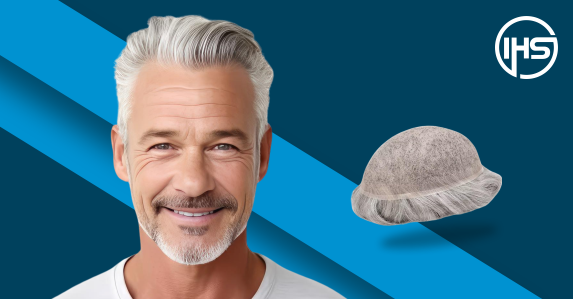



Contact our specialists now for Hair Replacement!
Struggling with both greys & thinning hair? We got you!
Grey hair is a unique moment many men experience, a reminder of time’s passage! It is a natural process that can be both a blessing and a curse for men.
There are often two perspectives on grey hair. The first is men embracing their salt and pepper(grey) hair as a sign of wisdom and experience, and the second is men starting to feel self-conscious about their changing appearance.
For many men, this journey can lead to a search for solutions, and one popular option is men’s hair systems.
But again, turning to men’s hair systems means having an understanding of the types of grey hair for hair systems, which is a must!
Grey hair starts to show when the production of melanin is reduced. Melanin is the pigment that gives hair its colour. As we age, our bodies produce less melanin, leading to the gradual greying of our hair!
Chances are some men start to experience grey hair in their 20s, while grey hair is most commonly seen in their 30s and 40s. According to a worldwide survey published in the British Journal of Dermatology, between 45 and 65 years of age, 74% of people were affected by grey hair with a mean intensity of 27%.
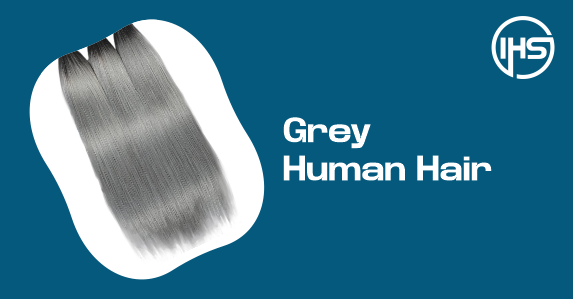
Grey human hair is made of natural human hair and is further made from Chinese Remy or Indian hair. It offers a natural look and feel that can be styled and coloured like natural hair and blends seamlessly with the wearer’s existing hair.
Grey human hair is often preferred for its durability and authenticity but is more expensive than synthetic hair.
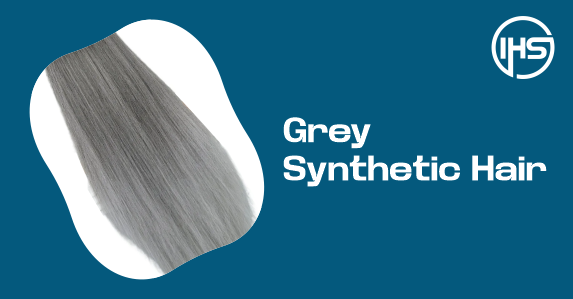
Grey synthetic hair is made from artificial fibres to replicate the appearance and texture of natural hair. It is often less costly than human hair and can hold styles longer. However, synthetic hair may look less natural and can be less durable.
It’s important to note that synthetic hair is more heat-sensitive and may not be styled with hot equipment.
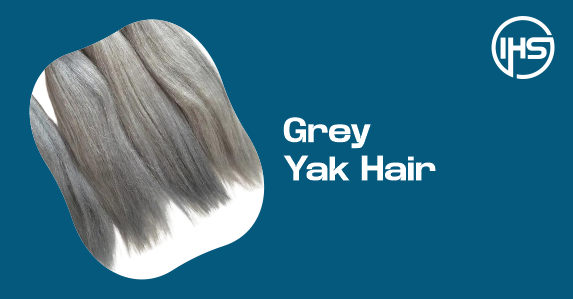
Grey yak hair is also a natural option sourced from the undercoat of yaks, mainly found in Tibet and Mongolia.
Yak hair is coarse and thick, making it suitable for certain types of hair systems requiring a heavier texture. Sure, it is affordable and durable, but it may provide a different softness and natural look than human or European hair.
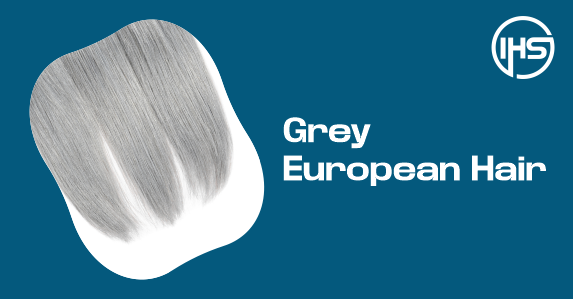
Grey European hair is a highly prized option because of its finest texture and natural softness.
This hair type is specially designed for individuals looking for a refined and realistic look. European hair systems are generally more expensive due to their premium quality and limited availability.

Grey Asian hair is generally thicker and straighter than European hair.
Asian hair is a good option for those who prefer a strong and voluminous hair system. It can be less costly than European hair but may require more processing to achieve the desired shade of grey.
Grey hair has a family of multiple shades right, from silver to pearl to rhino, so selecting the hair system that perfectly matches the grey of your existing hair becomes necessary.
Look for systems that offer customisable colour options to achieve the most realistic blend.
Chinese remy and Indian hair are the best for the most natural appearance and texture. They can be styled and coloured like natural hair, providing flexibility, making it impossible to tell if someone is wearing a hair system.
Synthetic or any other form of hair system uses modacrylic fibres. These are generally less expensive and require less maintenance. However, they might look less natural, especially for grey hair, as the fibres sometimes appear too uniform or shiny.
Lace– This base material is very comfortable and breathable. It offers a natural look and is super comfy, making it suitable for sensitive skin.
Polyurethane– A polyurethane base offers a secure fit and is easier to clean, but it may be less breathable than lace.
Combination – Some systems use a combination of lace and polyurethane to balance comfort and durability.
If you want to choose the best hair system, pay close attention to hair dens. They play a considerable role in making your hair system look natural.
As people age, their hair naturally thins, so it is critical to select a system with a density that matches the typical density of their hair.
TIP - Avoid overly dense systems as they can appear unrealistic.
Grey hair systems, like all hair systems, require regular maintenance.
Opt for a system that suits your lifestyle in terms of how often it needs to be cleaned, conditioned, and styled.
Finally, consult a hair replacement specialist who can help you choose the best hair system. They can help you find a system that exactly matches your hair texture, density, and color, ensuring a natural look.

IHS Hair Replacement is a hair replacement brand based in 2 prime locations, West Kensington in West London and Liverpool Street in Central London. We provide a full head of hair achieved through our hair integration procedure giving you confidence and life.